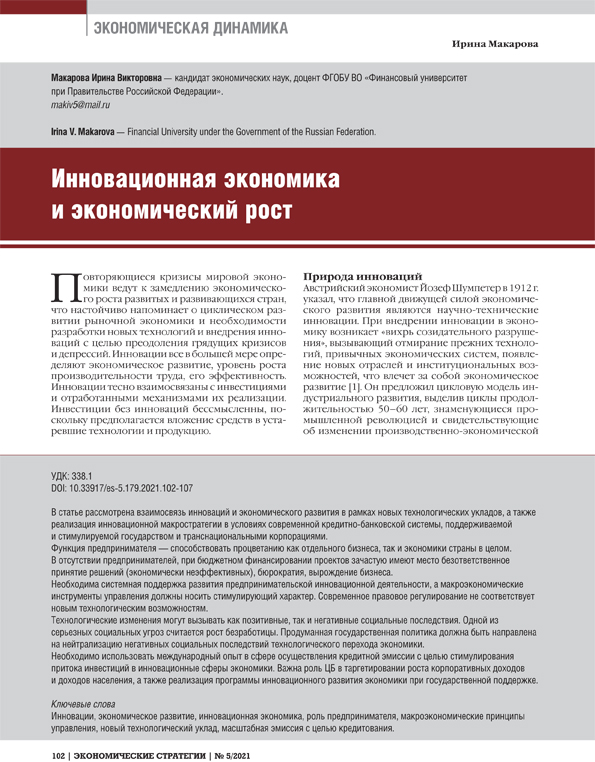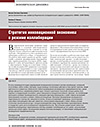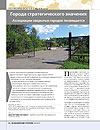Innovative Economy and Economic Growth
DOI: https://doi.org/ 10.33917/es-5.179.2021.102-107
The article examines relationship between innovation and economic development in the framework of new technological structures, as well as implementation of an innovative macro-strategy in the context of modern credit and banking system, supported and stimulated by the state and by transnational corporations. The function of an entrepreneur is to contribute to prosperity of both an individual business and the country’s economy as a whole. In the absence of entrepreneurs, budget financing of projects often involves irresponsible decision-making (economically ineffective), bureaucracy and business degeneration. Systemic support for the development of entrepreneurial innovation is needed, and macroeconomic management tools should be stimulatory. Modern legal regulation does not comply with new technological possibilities.
Technological change can have both positive and negative social consequences. Growing unemployment is considered one of the serious social threats. A well-thought-out state policy should be aimed at neutralizing the negative social consequences of the economy technological transition. It is necessary to use international experience in implementing credit issue in order to stimulate investments in innovative sectors of economy. The role of the Central Bank in targeting the growth of corporate incomes and incomes of the population is important, as well as implementation of the program for innovative development of the economy under the state support.











